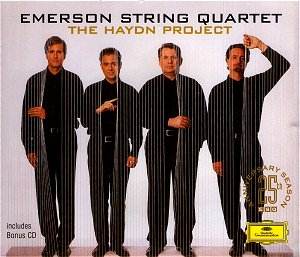 Composer: Franz Schubert
Composer: Franz Schubert
Works: Symphonies No. 5 D485, No. 8 “Unfinished” D759, Overtures in the Italian Style D590 and D591
Performers: Royal Concertgebouw Orchestra, Nikolaus Harnoncourt (conductor)
Recording: Recorded Concertgebouw, November 1992
Label: APEX 0927 40840-2
Franz Schubert, a luminary of the early Romantic period, often oscillated between lyrical beauty and profound introspection, a duality that is particularly evident in his symphonic oeuvre. The fifth symphony, composed in 1816, emerges as a work of youthful exuberance and charm, while the eighth, left unfinished in 1822, encapsulates a sense of haunting incompleteness and emotional depth. In this recording, Nikolaus Harnoncourt and the Royal Concertgebouw Orchestra offer a compelling interpretation that sheds light on both the overt brilliance and the underlying complexities of these works.
Harnoncourt’s approach diverges markedly from the more traditional romantic interpretations of Schubert, which often emphasize a straightforward lyricism. Instead, he imbues the Fifth Symphony with a serious-mindedness that reveals the latent tensions within its joyous exterior. The opening Allegro vivace is imbued with a buoyant vitality, yet Harnoncourt skillfully subverts its celebratory energy, probing into the nuances that suggest a deeper emotional landscape. His attention to Schubert’s tempo markings in the Andante con moto cultivates a gravitas that belies the work’s apparent lightness, allowing the unfolding melodic lines to resonate with a sense of profound reflection. The strings exhibit a lithe and unsaturated tone, allowing the woodwinds’ exquisite articulation to shine through, particularly in the delightful interplay of themes that characterizes this movement.
The “Unfinished” Symphony, arguably one of Schubert’s most cherished works, receives a particularly fine interpretation under Harnoncourt’s baton. Here, the conductor’s mastery of rhythm and balance is on full display. The first movement’s brooding melancholy is rendered with a dark, introspective quality, an atmospheric choice that enhances the symphony’s emotional gravity. Harnoncourt refrains from overt interventionism, allowing the inherent beauty of the orchestration to unfold naturally. The second movement, marked Allegretto, is executed with a sublime fluidity, the orchestra’s careful phrasing imparting a sense of yearning that is both poignant and deeply moving.
The coupling of the Italian Overtures, D590 and D591, complements the symphonic works rather than serving as mere fillers. Harnoncourt’s interpretations here are vibrant and engaging, showcasing the orchestral color and rhythmic vitality that characterize these early essays in orchestral writing. The meticulous attention to detail in the performance enhances the sense of place and character, transporting the listener to a world imbued with Italianate warmth and exuberance.
The sound quality of this recording merits particular mention. The engineering ensures clarity and precision, enabling the subtle delineation of instrumental lines that Harnoncourt draws from the Concertgebouw Orchestra. Each section is distinctly audible, with the balance between strings, woodwinds, and brass finely tuned, allowing for an immersive listening experience that showcases the orchestra’s remarkable cohesion.
When placed alongside other notable recordings, such as those conducted by Herbert von Karajan or Leonard Bernstein, Harnoncourt’s interpretations stand out for their introspective depth and thoughtful execution. His readings eschew the more sensationalist tendencies often associated with these works, instead offering a nuanced exploration that invites repeated listening and contemplation.
The juxtaposition of Schubert’s exuberance and introspection is masterfully captured in this recording. Harnoncourt’s interpretations reveal the complexities embedded within the seemingly straightforward melodies, affirming his stature as a conductor of profound insight. This disc serves as both an introduction for the uninitiated and a fresh perspective for seasoned listeners, making it a valuable addition to any collection. The Royal Concertgebouw Orchestra, under Harnoncourt’s guidance, delivers performances that resonate with clarity and emotional depth, rendering this recording highly recommended for its artistry and interpretative integrity.



